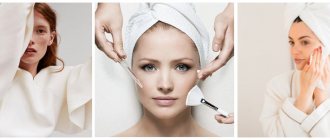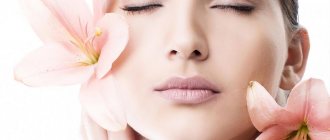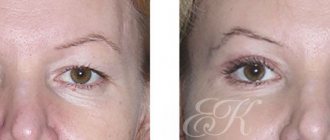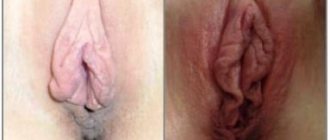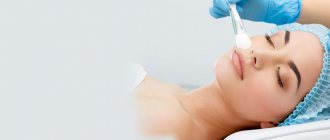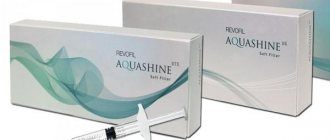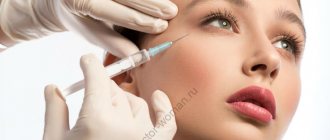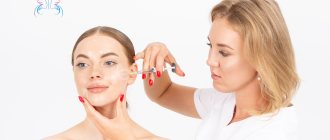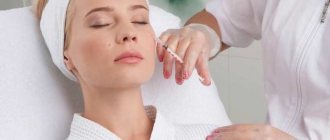Jessner peel - everything you need to know about the procedure
Peeling is a cosmetic procedure that allows you to stimulate the process of skin regeneration, restoration and renewal of the epidermis. Modern aesthetic medicine offers clients a wide variety of peeling types, but one of the most popular today is the Jessner (Hollywood) peel. It is this cosmetic procedure that most Hollywood stars resort to, as the results exceed all expectations.
Indications for chemical peeling
If we talk about indications for this cosmetic procedure, these could be:
- acne and post-acne (pigmentation, scars);
- hyperpigmentation of the facial skin, in particular caused by pregnancy;
- small cysts on the skin - comedones;
- enlarged pores;
- manifestation of the first signs of skin aging (shallow wrinkles and folds);
- seborrheic crust;
- freckles;
- ingrown facial hair, caused, for example, by shaving;
- uneven surface of the skin on the face;
- hyperkeratosis - thickening of the epidermis.
During a personal consultation, a cosmetologist will tell you whether Jessner peeling can be done for you personally or not, since the cosmetic procedure has a number of contraindications. The main limitations of chemical peels include:
- purulent-inflammatory skin diseases;
- herpetic plaques;
- allergy to the components included in the Jessner peel;
- injured areas of skin on the face;
- pregnancy and breastfeeding;
- diabetes;
- sun and thermal burns;
- fungal infection of the epidermis;
- rosacea - vascular network on the face;
- large moles;
- oncological pathologies, etc.
In addition, a relative contraindication to a chemical peeling session is dark skin tone. Therefore, before performing a Jessner peel on a patient with dark skin, each cosmetologist tests the perception of the cosmetic procedure.
It is not recommended to perform chemical peeling in spring and summer when there is excessive sun activity. This is due to the risk of the appearance of foci of hyperpigmentation on the face due to natural insolation.
More about the procedure
Content:
- More about the procedure
- Indications for the procedure
- Jessner peel procedure
- Skin care after the procedure
Jessner's peeling composition was discovered completely by accident. American doctor Max Jessner set himself the goal of developing a special composition of shaving lotion that prevents irritation and suppuration.
The product was intended for submarine employees - given the special conditions of their service, skin health is a very important factor. In his developments, the doctor focused on antiseptic properties. Some time later, it was noted that there were fewer wrinkles on the faces of sailors using the lotion, and their skin simply glowed with health. This information became known to Hollywood stars, who quickly appreciated all the benefits of the unusual cosmetic product.
A little later, a procedure such as Jessner peeling began to be provided in most beauty salons. It is based on the use of an antiseptic lotion, which includes salicylic and lactic acids, resorcinol.
Solvents and alcohol are used as excipients. The drug is produced by many well-known world brands, which refine it and add new components. But today, the highest efficiency is observed in the classic composition, taking into account the proportions developed by the American doctor.
The benefits of the cosmetic product are achieved by its unique composition - there are no direct analogues.
What does a chemical peel consist of?
Jessner peeling is a gentle combination solution consisting of the following active ingredients:
- Resorcinol. The Jessner peel contains 14% resorcinol. This substance has pronounced disinfecting and tanning properties, so it is excellent for treating skin diseases. Resorcinol not only has an antimicrobial effect, but also enhances the effect of other components of chemical peeling on the epidermis. An equally important advantage of resorcinol is the relief of inflammation and skin irritation after the Jessner peeling procedure; patient reviews indicate that chemical burns heal well and do not leave scars.
- Lactic acid. The concentration of this substance in a chemical peeling solution is 14%, but can sometimes be increased to 20%. Lactic acid is a natural component of the epithelium, so if it gets on the surface of the skin, an acidic environment occurs. Due to this, not only the growth and reproduction of pathogens on the skin is suppressed, but also acne goes away. Lactic acid promotes exfoliation of skin cells, whitening and moisturizing of the epidermis, as well as the production of elastin and collagen.
- Salicylic acid. This chemical peeling component also has a concentration of 14%. It perfectly cleanses the skin of sebaceous plugs, tightens enlarged pores, reduces inflammation, and reduces itching. When salicylic acid is applied to the skin, the top layer becomes softer and therefore easier to peel. The antiseptic promotes the regeneration of the epidermis.
This is a traditional chemical peel formulation that was developed by dermatologist Max Jessner. In 1993, the peeling composition was improved by adding hydroquinone. However, in Russia, procedures using formulations based on this substance are prohibited, since excessive use of hydroquinone poses a risk of cancer cell growth.
Precautionary measures
There is a list of contraindications under which Jessener peeling is prohibited. Among them:
- pregnancy and breastfeeding;
- severe inflammatory processes on the skin of the face;
- herpes in the acute stage;
- elevated temperature;
- a large number of warts;
- fungal diseases of the skin;
- diabetes;
- epilepsy and mental disorders;
- oncology;
- taking antibiotics;
- allergic reactions to the components of the peeling composition;
- when you used retinoids to eliminate acne.
Before cleansing your face, test the product on your wrist. Apply a drop of medicinal suspension and leave it for 10-15 minutes. The absence of side effects is a green light for facial peeling.
It should be noted that due to the combination of lactic acid and resorcinol, allergic reactions may occur, which are accompanied by:
- redness (normal 2 days after the session) or yellowing of the skin;
- acne formation;
- swelling;
- itching;
- darkening of certain areas of the skin;
- hypersensitivity;
- excessive peeling;
- ulcers and open wounds.
After 1–2 weeks, such negative manifestations disappear on their own. If hygiene rules are not followed, infections, exacerbation of herpes and severe allergies may develop.
Types of chemical peeling
Photos of patients will tell you best about how Jessner peeling works. The skin is renewed, becomes uniform, and shallow wrinkles are smoothed out. The degree of impact on the skin and the depth of the rejuvenation effect depend on what type of peeling is used for a particular patient:
- Super-superficial peeling. This type of Hollywood peeling involves applying a minimal concentration of a chemical solution to the skin. Therefore, another name for this procedure is Jessner’s home peeling, since many women apply a special solution to the skin on their own without visiting a cosmetologist.
- Superficial peeling. During the procedure, the cosmetologist applies 1 layer of a special solution to the skin, which actively renews the epidermis, helps narrow pores and smooth out the skin texture. After exposure, active peeling of the skin is observed for 2-3 days.
- Medium peeling. The main indications for medium Hollywood peeling are expression lines, areas of pigmentation on the facial skin, and scars. During the procedure, the chemical solution penetrates the entire depth of the epidermis, but the basement membrane remains intact. Recovery after Jessner peeling in this case lasts up to 5-7 days.
- Deep peeling. This procedure is used extremely rarely, as it is associated with very severe trauma to the facial skin and can only be performed by a certified doctor. To achieve a deep peeling effect, the specialist applies a solution of resorcinol, salicylic and lactic acids to the skin in 4-5 layers. Peeling of the epidermis persists for 14 days.
Which is better - superficial or medium Jessner peeling can only be decided by a cosmetologist after assessing the condition of the patient’s skin. Only with the correct selection of cosmetic procedures will it be possible to achieve excellent results in the fight against age-related changes and aesthetic imperfections of facial skin.
The essence of Jessner peeling for the face
Jessner peel is an alternative to surgery aimed at providing a rejuvenating effect. During its implementation, a specialist applies a mixture of three components to the skin:
- Lactic acid.
- Resorcinol.
- Salicylic acid.
Such substances:
- penetrate into the superficial and middle layers of the dermis;
- launch regeneration processes;
- enhance metabolism;
- normalize skin hydrobalance;
- renew cells and eliminate the stratum corneum.
After the procedure and rehabilitation period, the patient observes renewed skin with a healthy color and without many cosmetic defects.
Main positive and negative points
Carrying out peeling at the proper level, taking into account all the features of the dermis and existing age-related changes, has a number of positive aspects:
- Does not affect the deep layer.
- Effective even in old age.
- Positive changes are visible after a single session.
- Short rehabilitation period.
- Does not leave cracks or scars on the epidermis.
- Relatively painless procedure.
- Reduces wrinkles and sagging.
- Restores water balance.
- Removes dead cells.
- Cleanses pores and eliminates blackheads.
- Reduces itching and accelerates healing processes.
- Eliminates acne and prevents the appearance of new ones in the future.
This procedure gives a lifting effect, after which the skin visually looks younger and fresher. In the process of applying a special mixture to the face, the epidermis receives a kind of burn.
This technique has some disadvantages:
- Unpleasant odor from the acid when applied to the face.
- Severe tightness and burning for 1 – 2 days.
- General redness of the face.
- Painful sensations during facial reactions, for example, smiling.
- The appearance of crimson spots.
Any of the listed symptoms last for several days, and then disappear on their own.
Also, most patients name among the negative aspects a number of restrictions prescribed after the session. For example, a ban on the use of cosmetics and restrictions on going outside without using protective equipment.
Primary indications and who should not do it
Jessner peeling is not an aggressive chemical procedure, so it is recommended by cosmetologists in many cases. First of all, it is indicated for:
- Increased pigmentation, in particular after delivery.
- Disturbances in the functioning of the sebaceous glands.
- Problems with the hydrobalance of the skin.
- Mimic and other wrinkles.
- Stretch marks.
- Seborrhea.
- Manifestation of sagging dermis.
- Acne.
- Enlarged pores.
- Ingrown hairs and more.
Peeling is allowed for people over 25 years of age; earlier it is possible, but with a more thorough analysis of cosmetic defects on the epidermis. Regardless of the existing skin blemishes, the technique must be abandoned if:
- Pregnancy or lactation.
- Allergies to any of the ingredients in the mixture.
- Cardiovascular diseases.
- Diabetes mellitus.
- Flu or other colds.
- Any recent surgical interventions.
- Autoimmune diseases.
- Neoplasms.
- Moles, especially large ones.
- Severe injury to the skin.
- Sun and other burns.
- Herpes, at any stage of its course.
- Infectious skin lesions.
- If six months have not passed after taking certain medications (for example Recutal).
People with increased dark skin should also refrain from a session in the summer. The procedure is not allowed if you feel any discomfort, even minor.
To prevent disruptions in the functioning of the body, it is better if you undergo a medical examination and tests before the course of peelings.
Care after chemical peeling
The Hollywood peeling procedure follows a standard protocol:
- preparation for a cosmetic procedure, cleansing the epidermis of sebum and impurities;
- applying a special solution to the skin;
- applying a soothing, moisturizing and pain-relieving mask.
The effect of Jessner peeling lasts for 5-6 hours. After this, the remaining solution is washed off by the patient himself at home.
Since the skin is renewed by exfoliating the epidermis (the top layer of skin), care after a cosmetic procedure is very important. During rehabilitation, it is important to follow the recommendations of the cosmetologist:
- in the first days after chemical peeling, it is prohibited to use any skincare products;
- after a few days, you can use cosmetics with a pronounced antioxidant effect;
- It is forbidden to apply decorative cosmetics to the skin for 5-6 days;
- Do not peel off crusts or exfoliate the skin yourself;
- When washing, sudden movements are prohibited; to cleanse the skin, use warm water and moisturizing foams;
- When leaving home, you should apply sunscreen to your skin.
Sign up for Jessner peeling in Kaluga by calling us +7 (4842) 279-679. The procedure of superficial or medium Hollywood peeling is carried out by a certified cosmetologist under 100% sterile conditions.
Preparatory stage
No special preparation is required for the procedure. You only need to thoroughly cleanse your face of makeup using makeup remover cosmetics that you use regularly.
It is also recommended to apply a nourishing mask to the skin a few hours before the procedure, which will better prepare it for the effects of acids.
If you want the consequences of exposure to chemical components on the skin to be minimal, train your dermis: a week before the session, wipe your face with a weakly concentrated lotion containing fruit acids.
In beauty salons, the dermis is always degreased, that is, the remaining sebum is removed. Regular soap is not used for this purpose. A special product with an acidity pH of 4.5–5.5 is suitable. It is distributed over the entire surface of the face, wait 30 seconds, and then rinse with regular warm water.
Indications and contraindications
Depending on the depth of impact, Jessner peeling can be useful not only for mature, but also for young skin that has typical imperfections characteristic of adolescence and youth.
INDICATIONS
- acne and post-acne;
- increased pigmentation of the skin;
- enlarged pores on the face;
- the presence of pronounced facial wrinkles;
- to eliminate cosmetic defects - shallow scars;
- if you have freckles.
CONTRAINDICATIONS
- presence of herpes infection in the body;
- infectious, purulent diseases of the epidermis;
- a large number of pigmented neoplasms on the skin (including moles);
- with diabetes mellitus;
- people who suffer from cancer;
- when the body's immune system is disrupted;
- pregnant women and nursing mothers;
- persons who suffer from mental illnesses and disorders.
If you ignore these contraindications, the following complications may develop: streptoderma, exacerbation of herpes infection, allergies.
A good and lasting result can be achieved by combining Jessner peeling with TCA peeling, as well as biorevitalization. With complex use, the skin will look attractive, tightened and fresh for a long time.
Question answer
When such procedures are carried out, it is recommended to refrain from exposure to active sun.
Most experts say that after such peeling you can sunbathe for at least 30 days. But it's better to wait even longer. Pigmentation is a direct indication for this manipulation. The fact is that Jessner peeling remarkably whitens the skin. But it is worth noting that in cosmetology there are other, more effective methods for eliminating age spots. This includes laser resurfacing and ATP therapy.
A cosmetologist will be able to accurately answer this question after consultation. Often it is necessary to conduct a course that consists of 3-6 sessions. There should be about 2-4 weeks between them.
